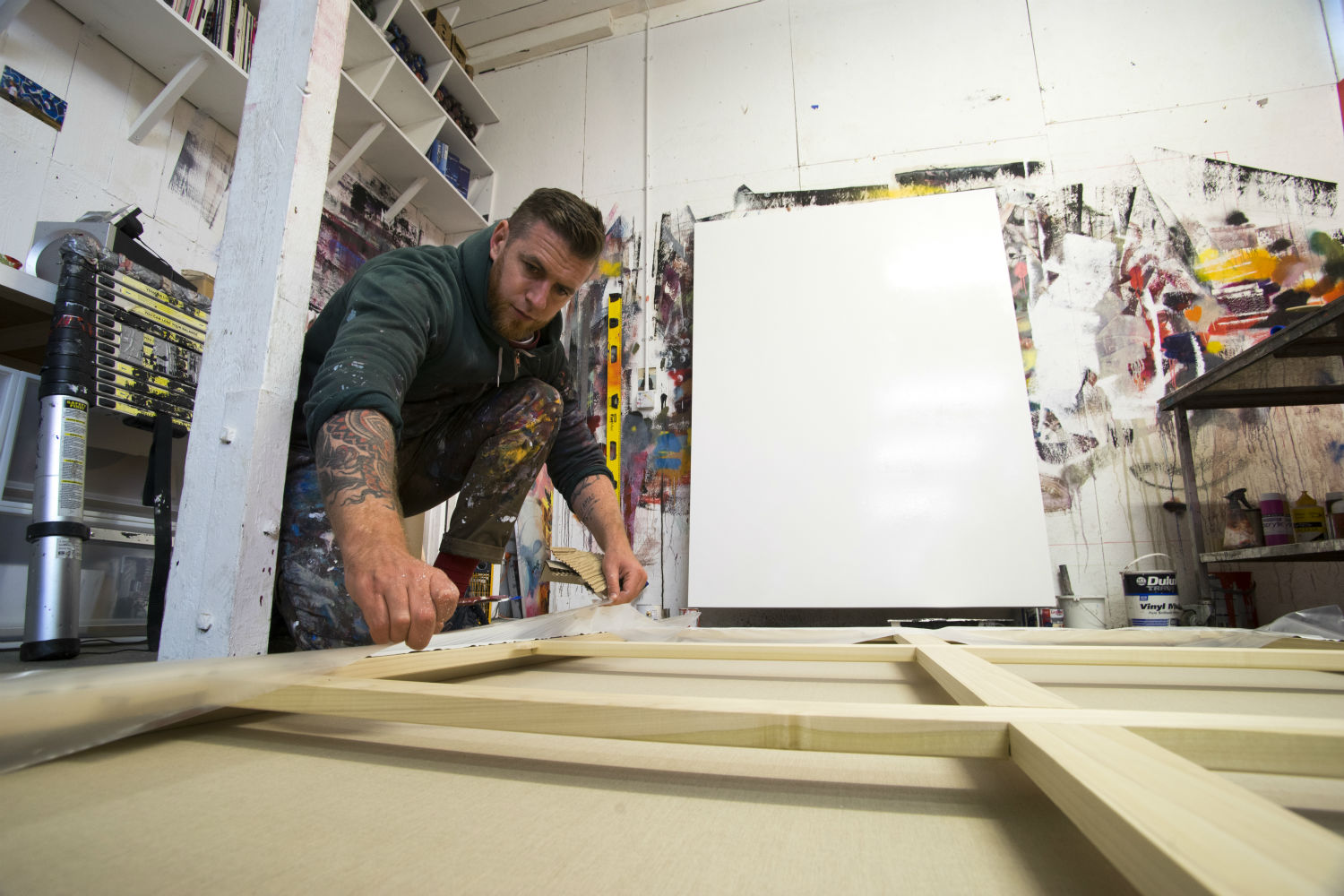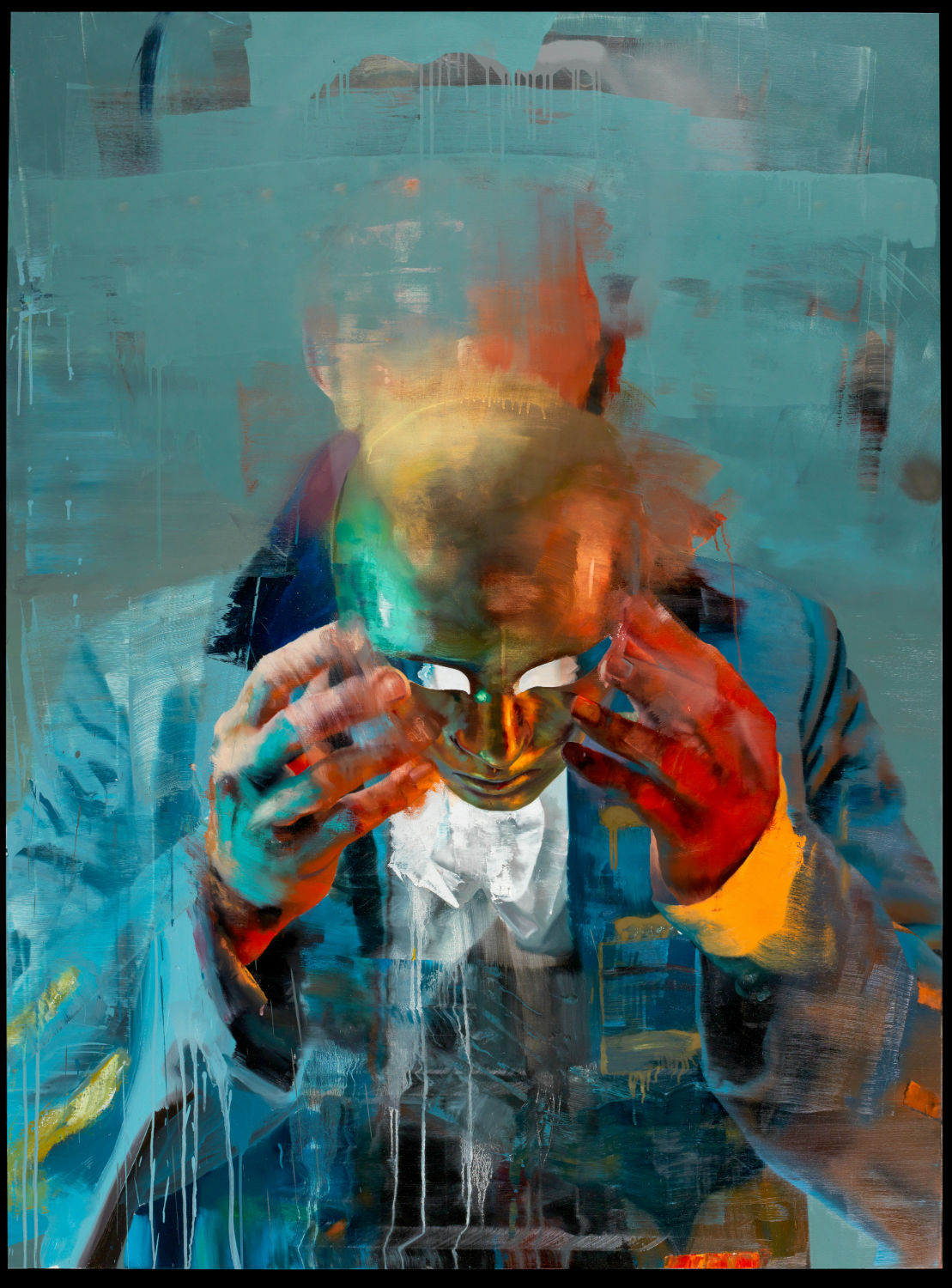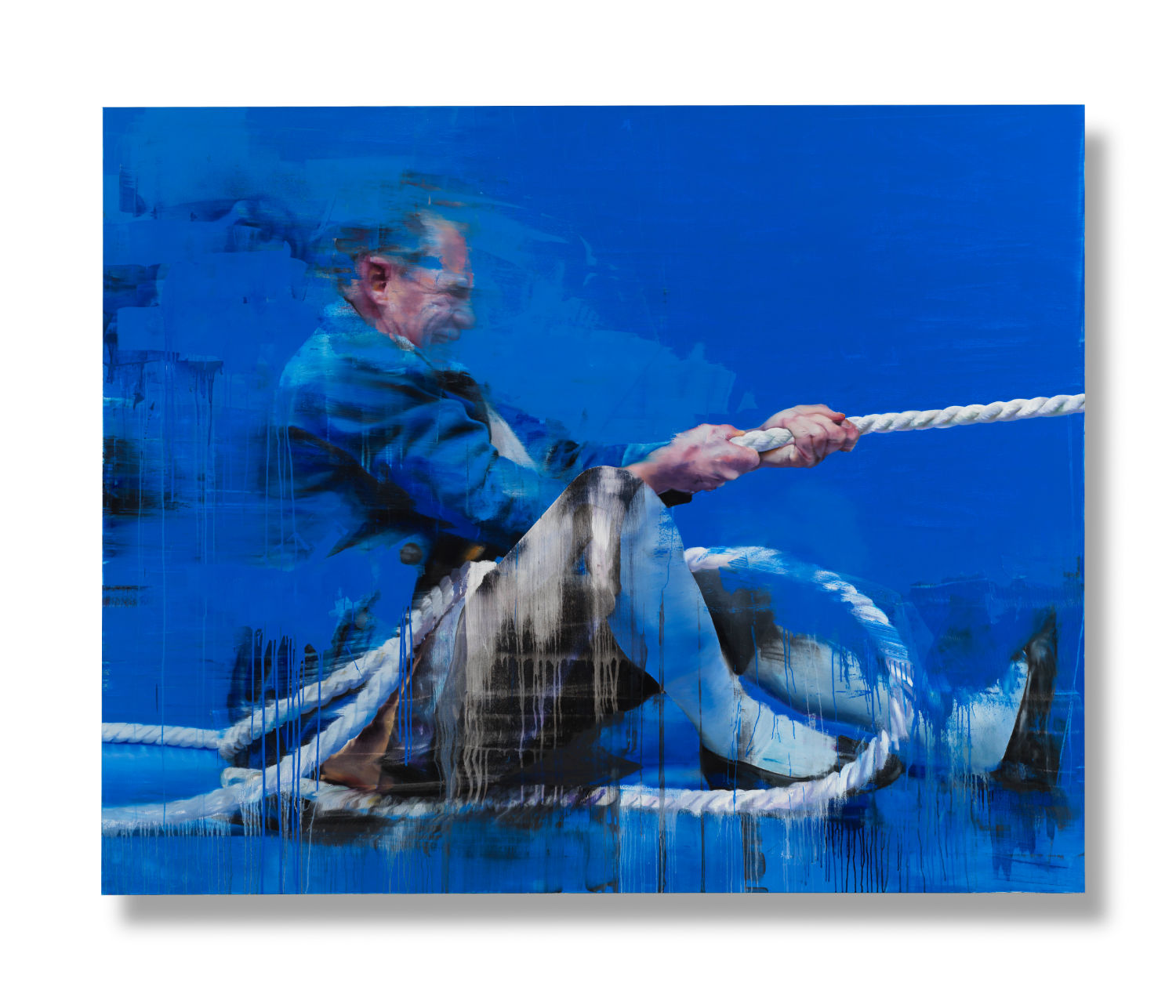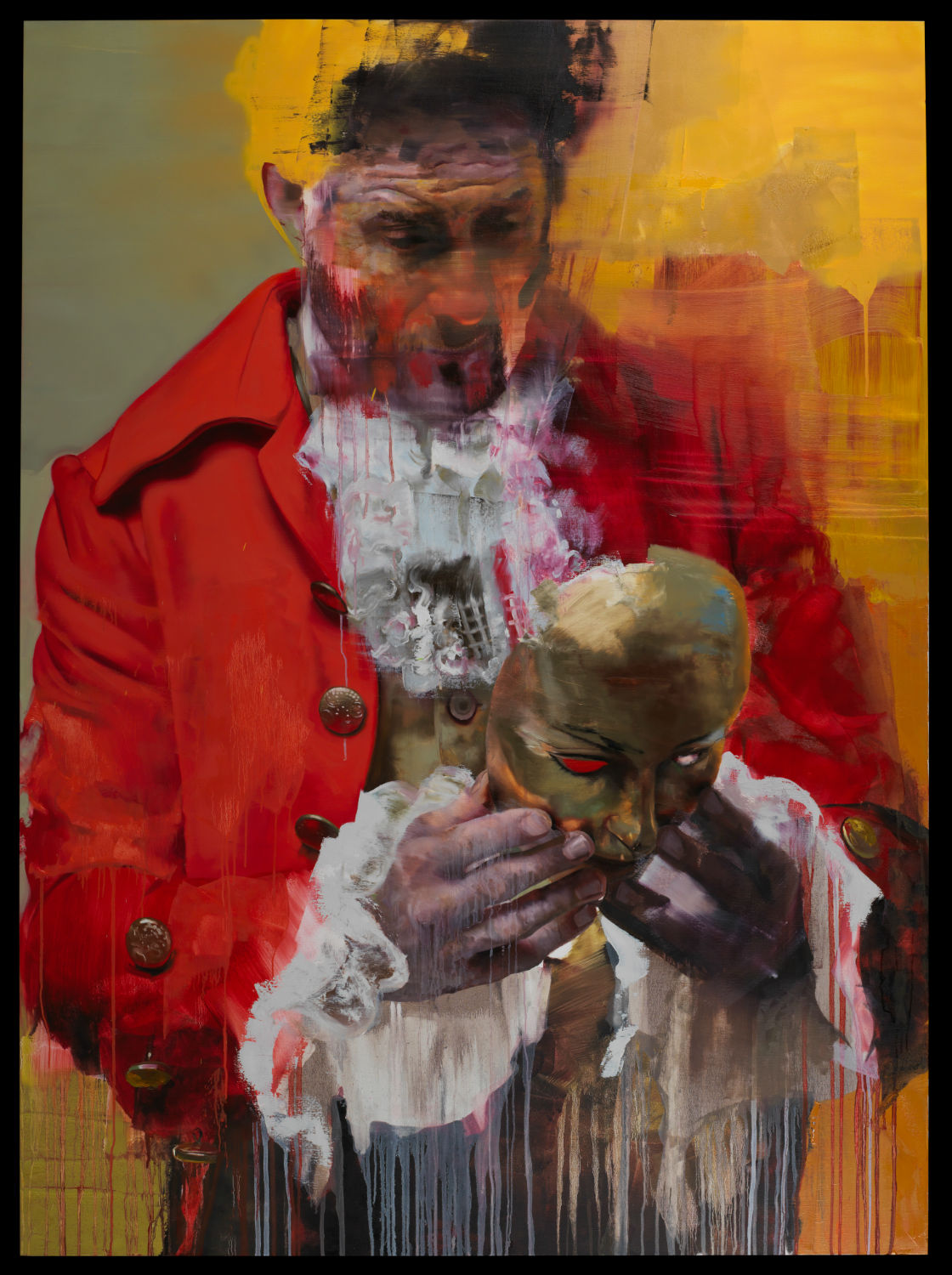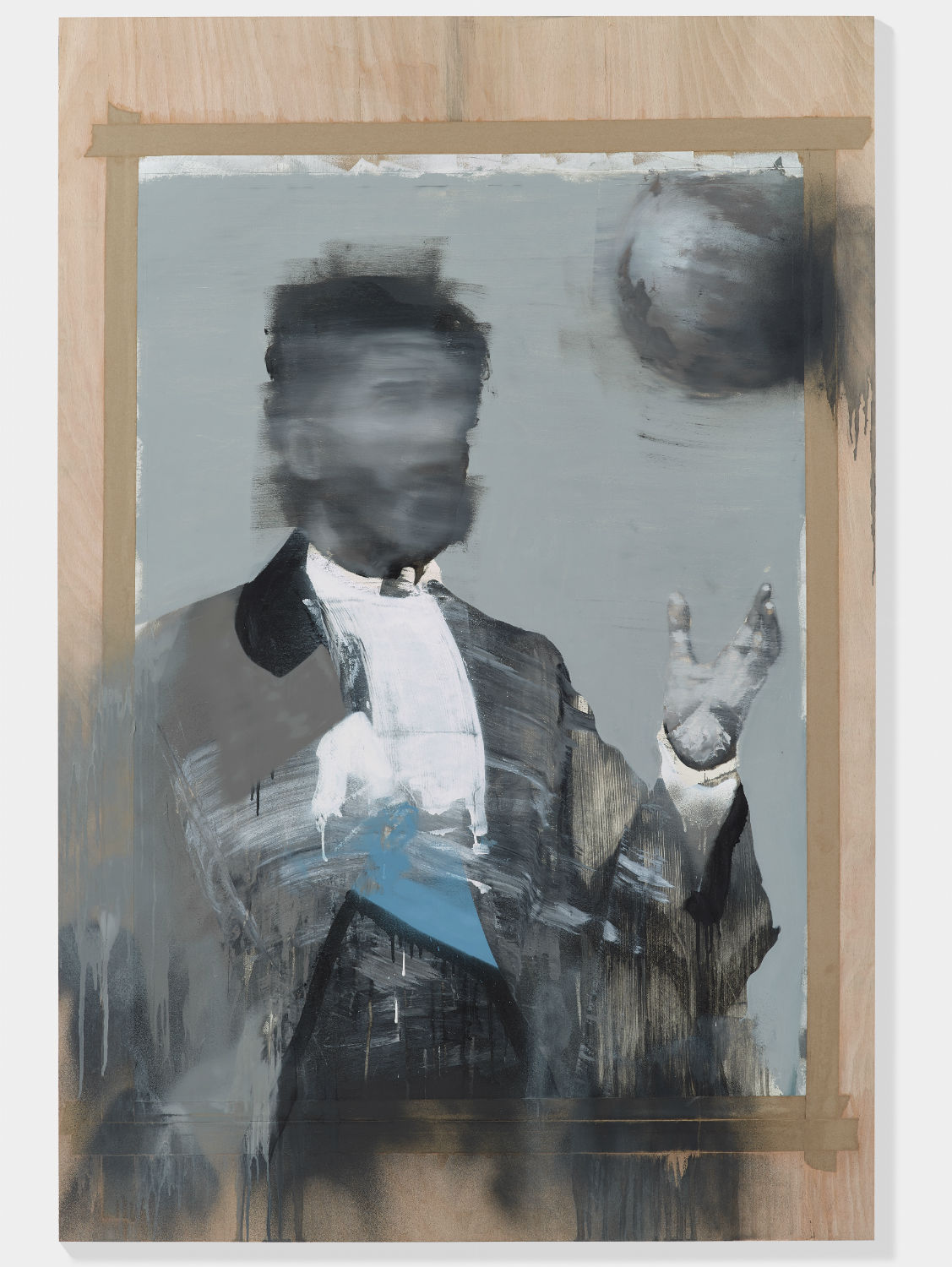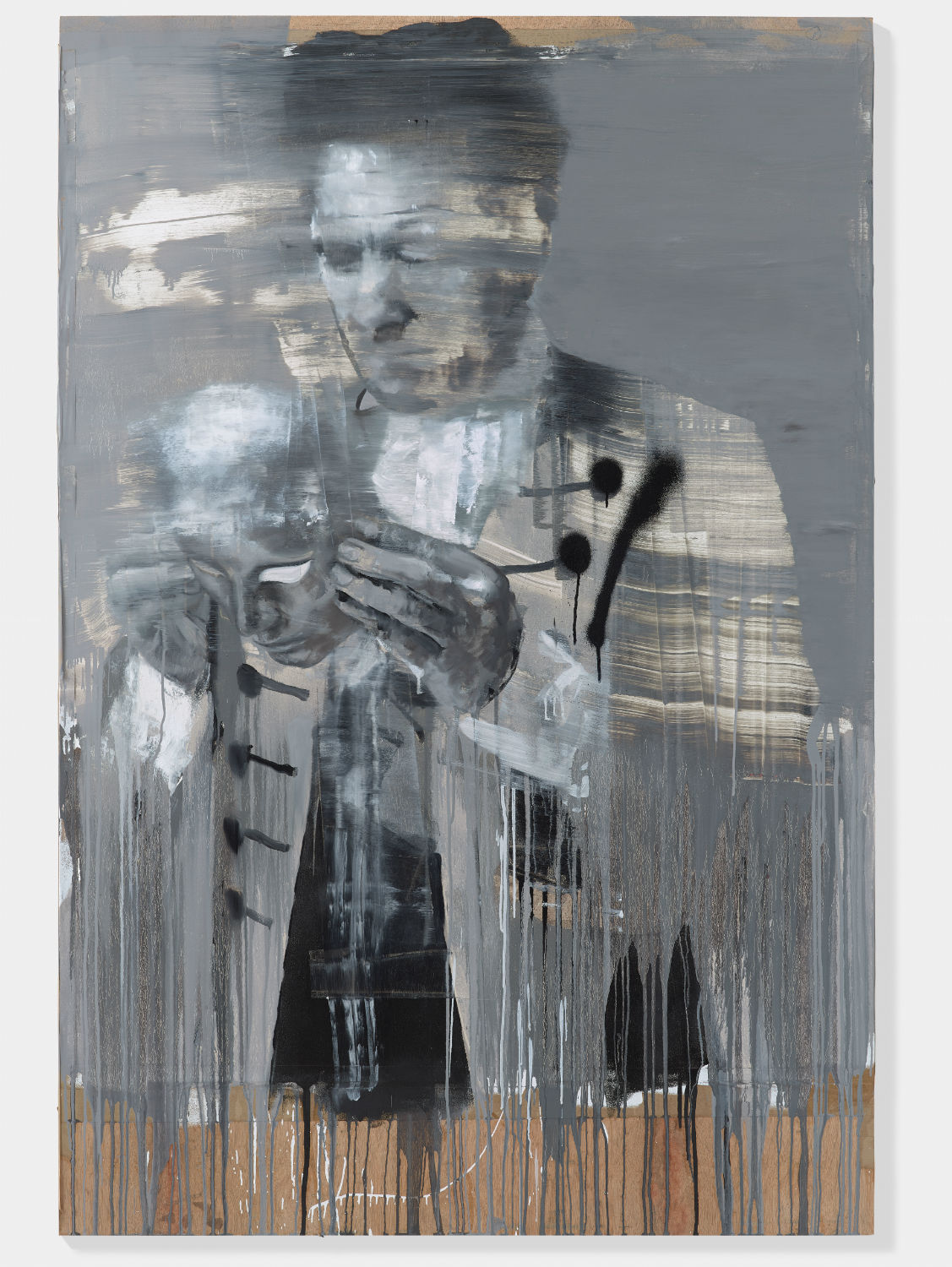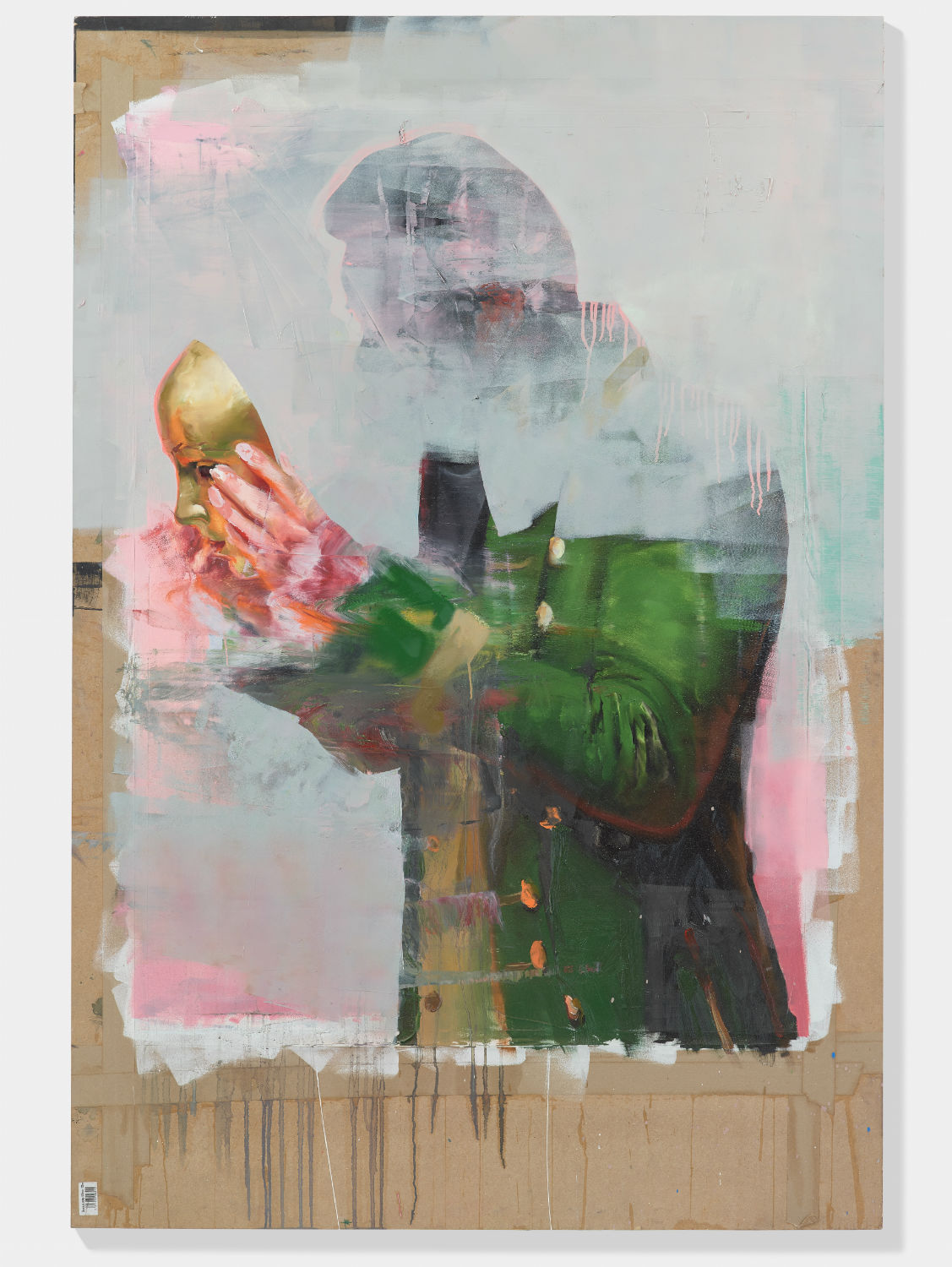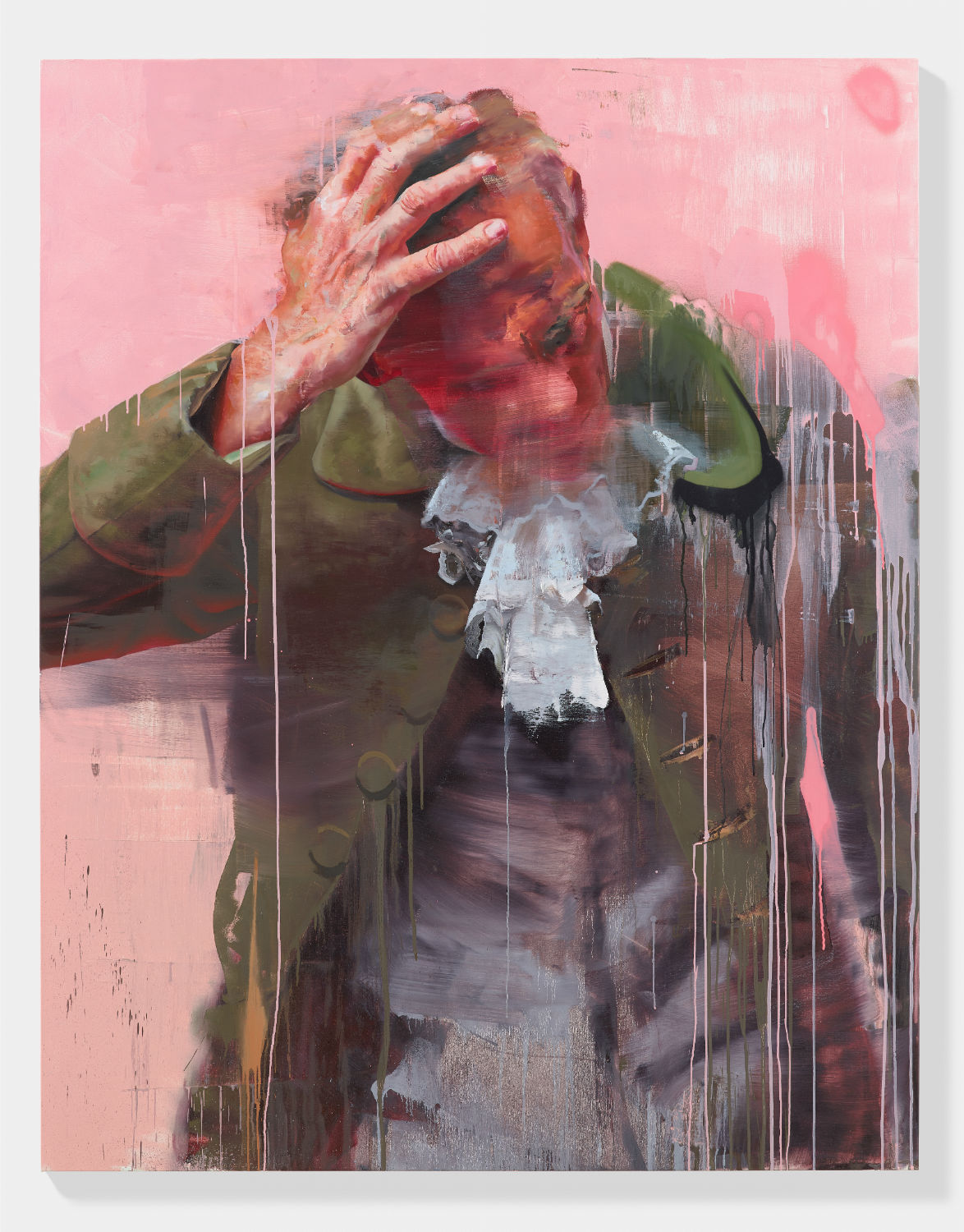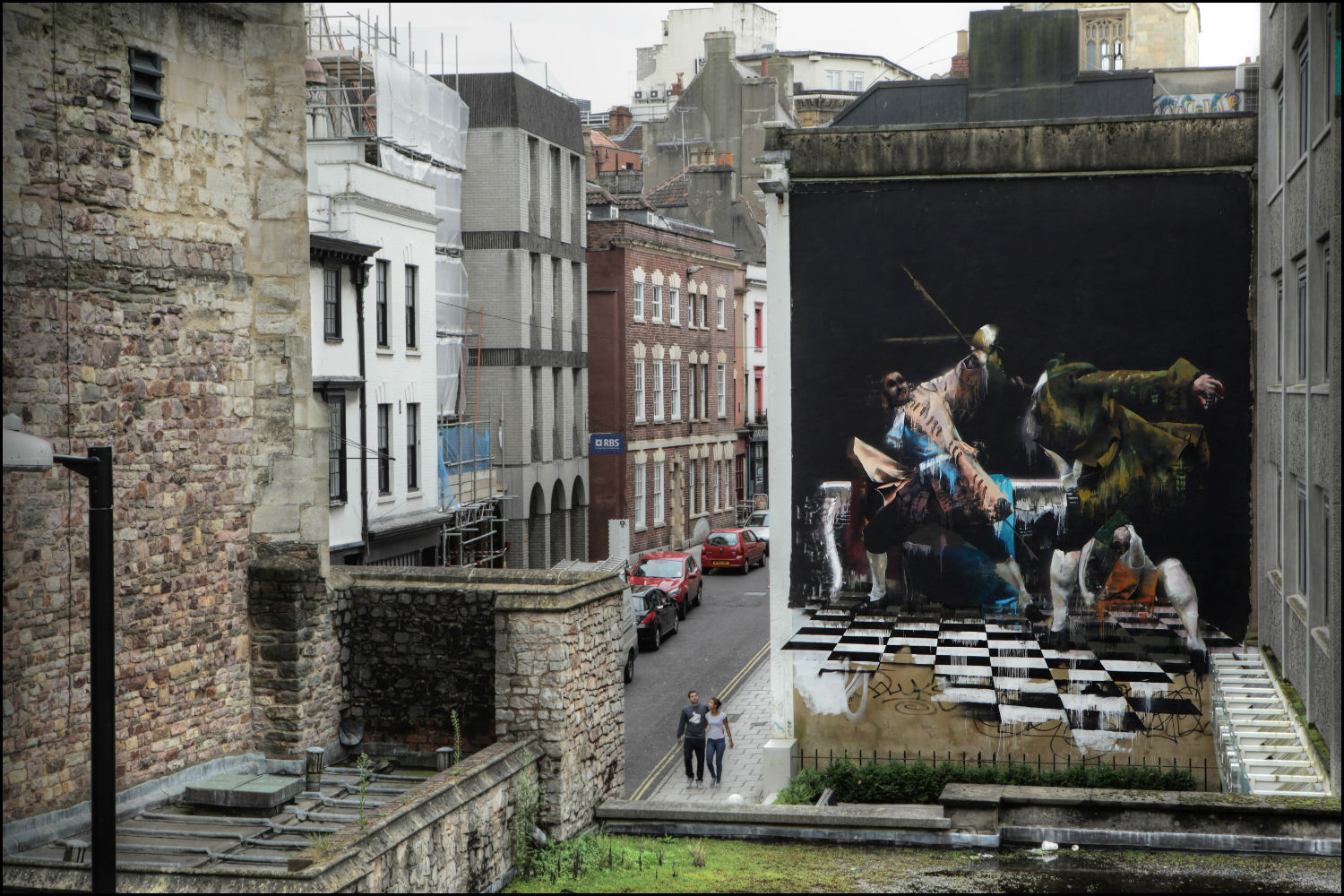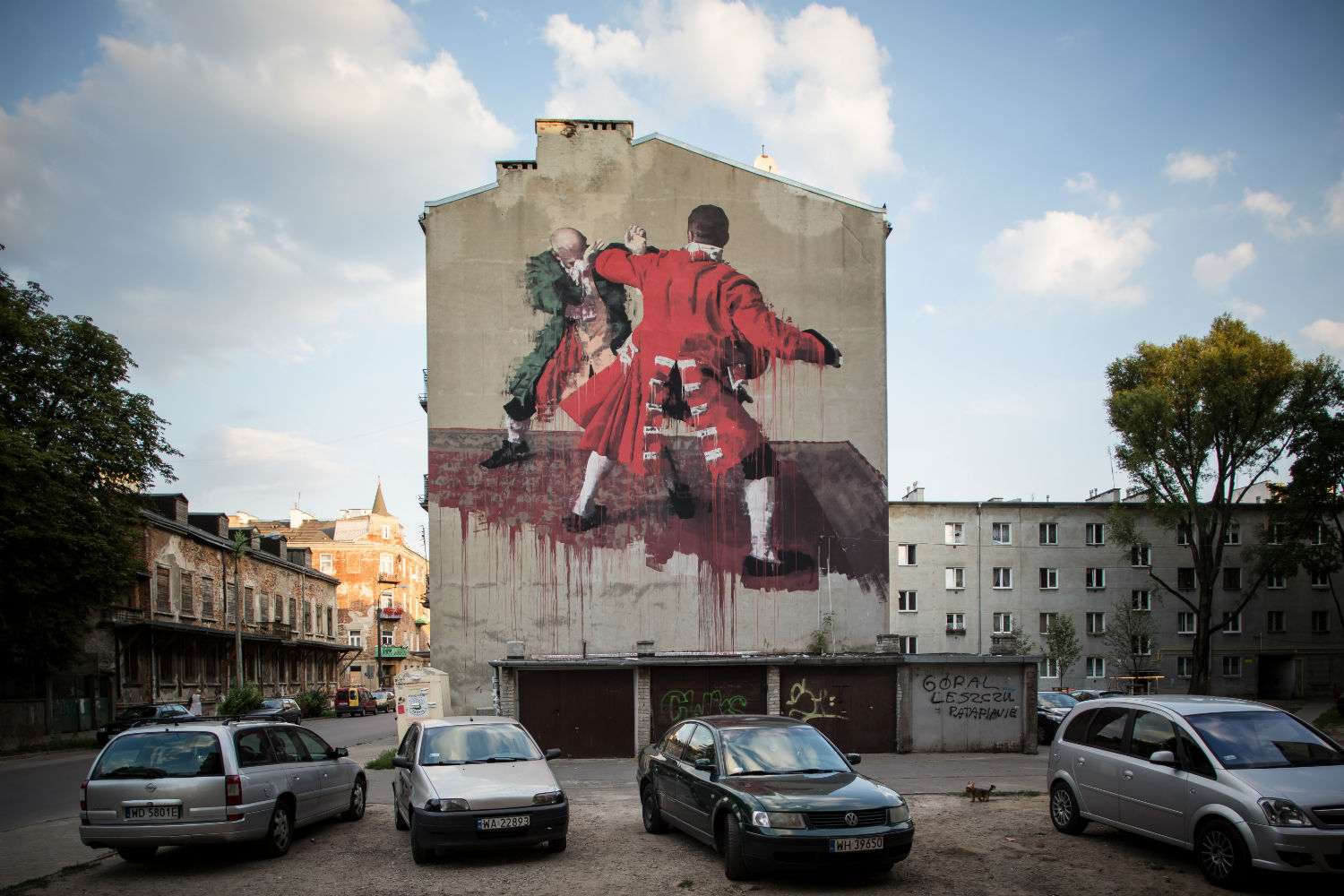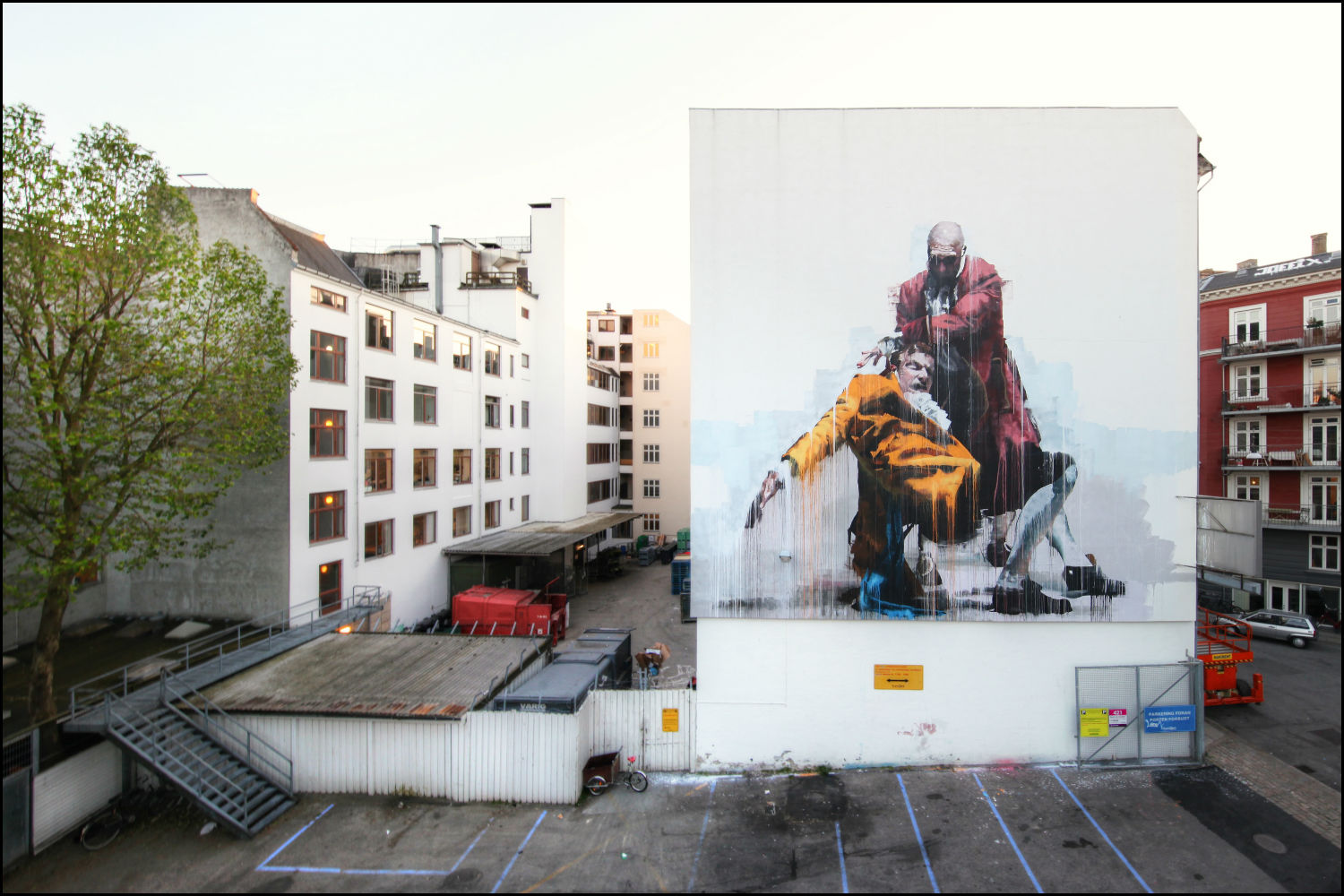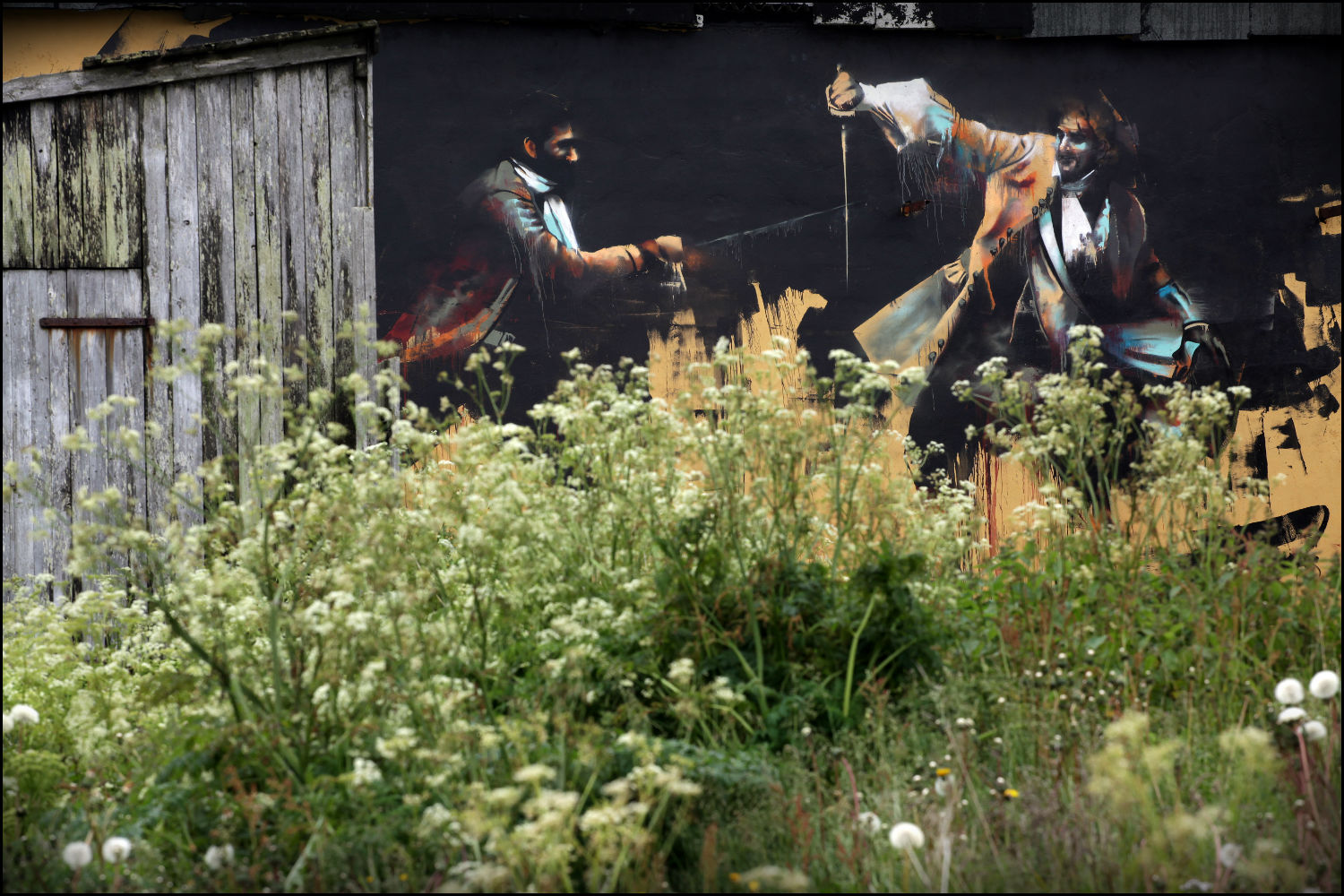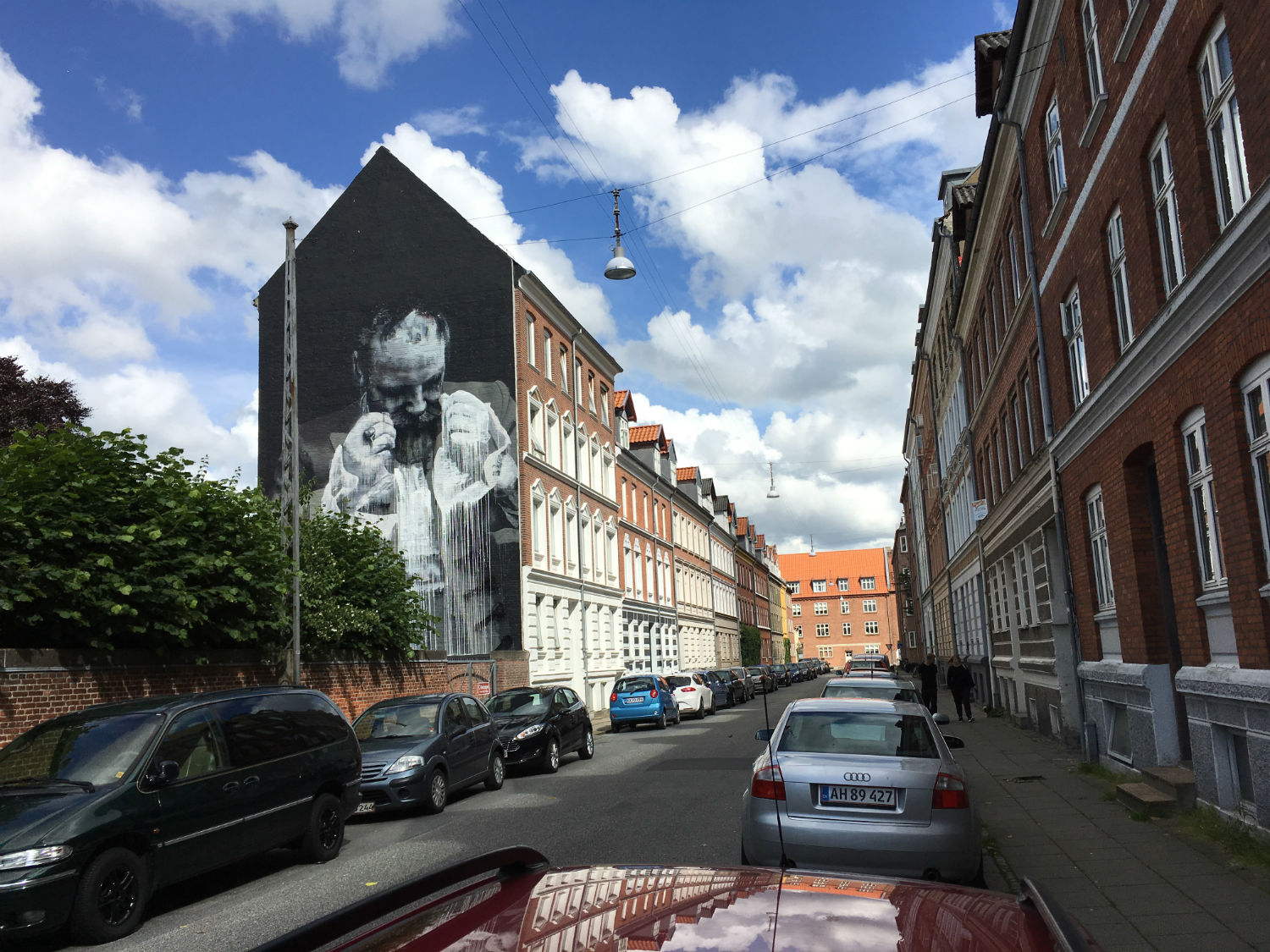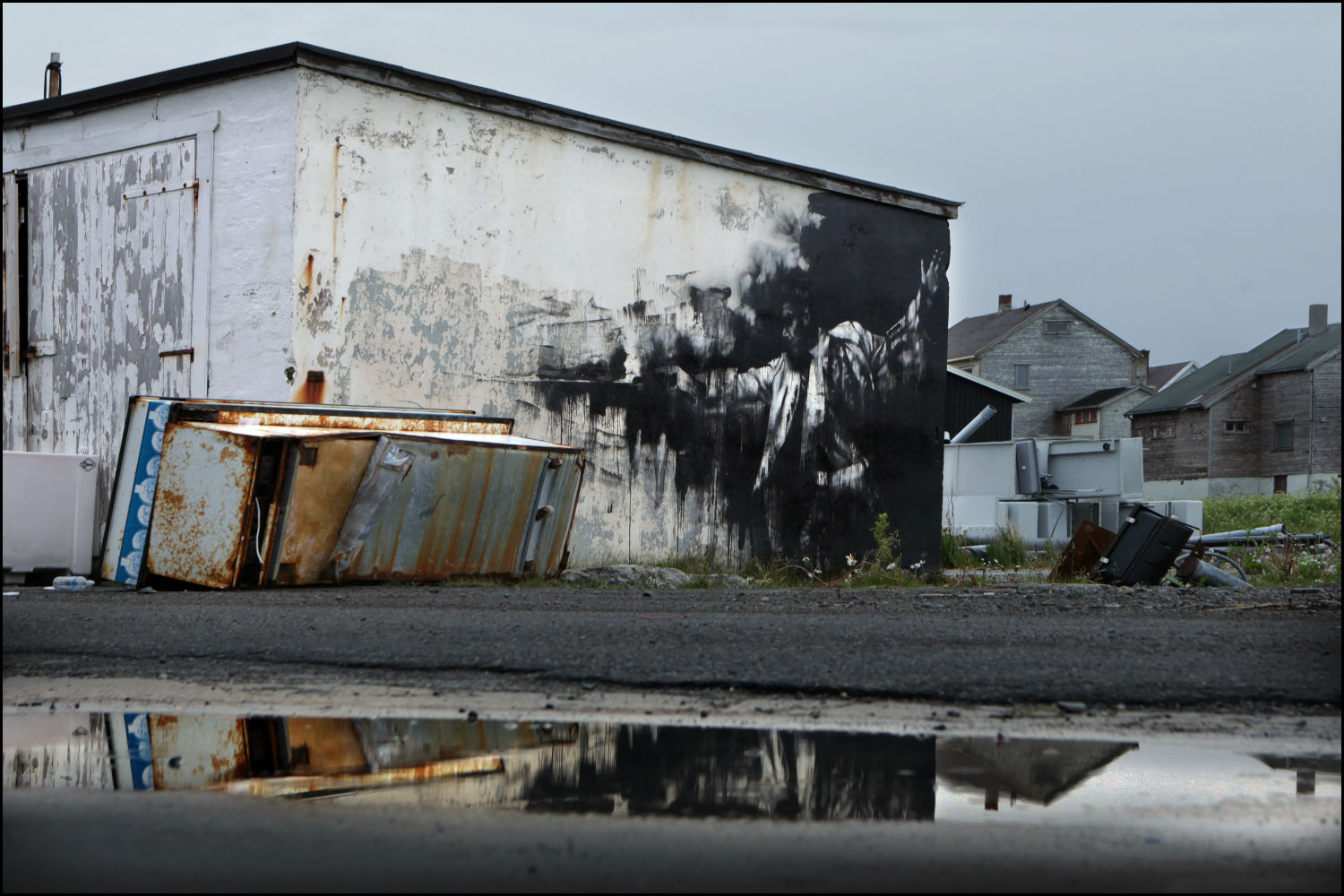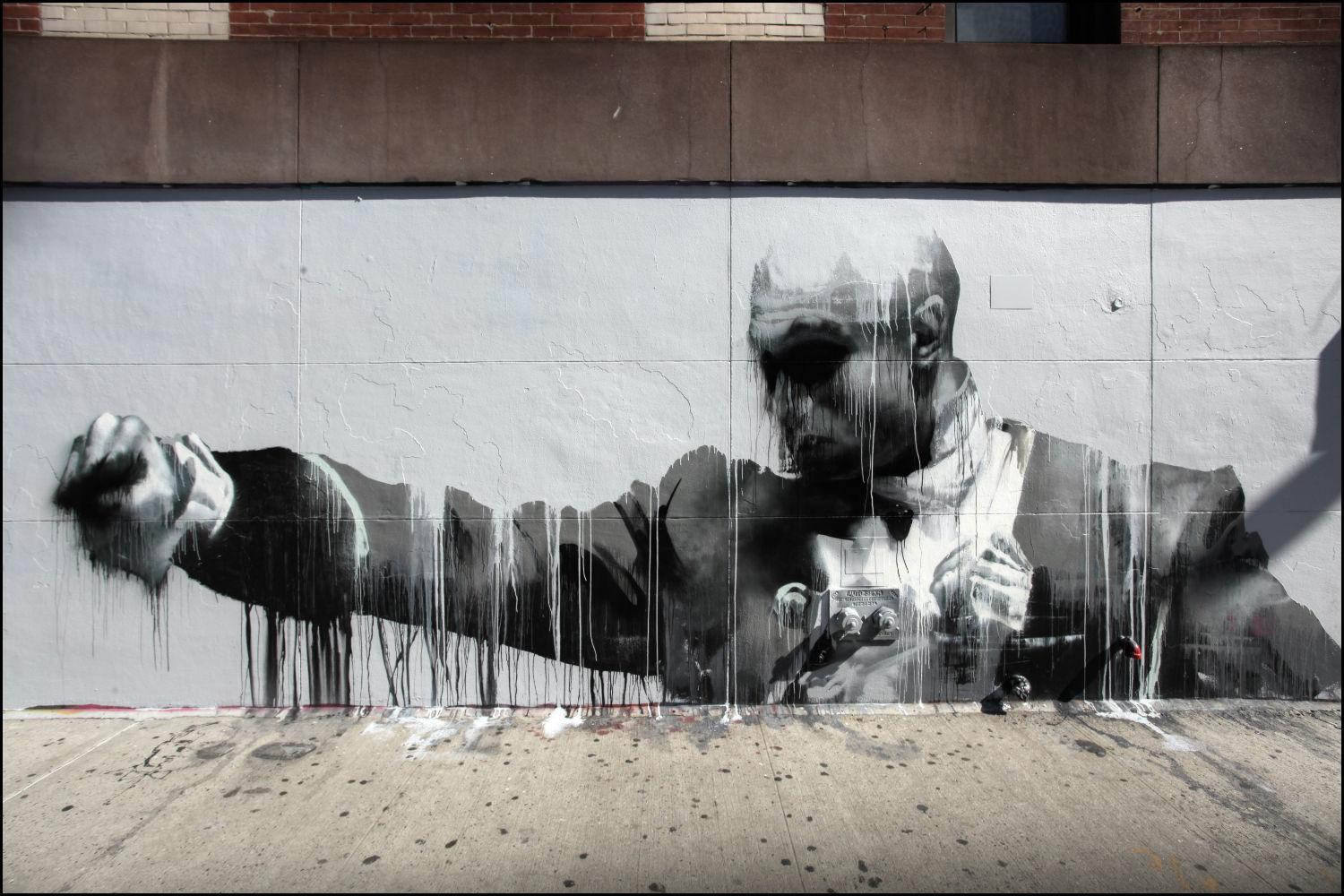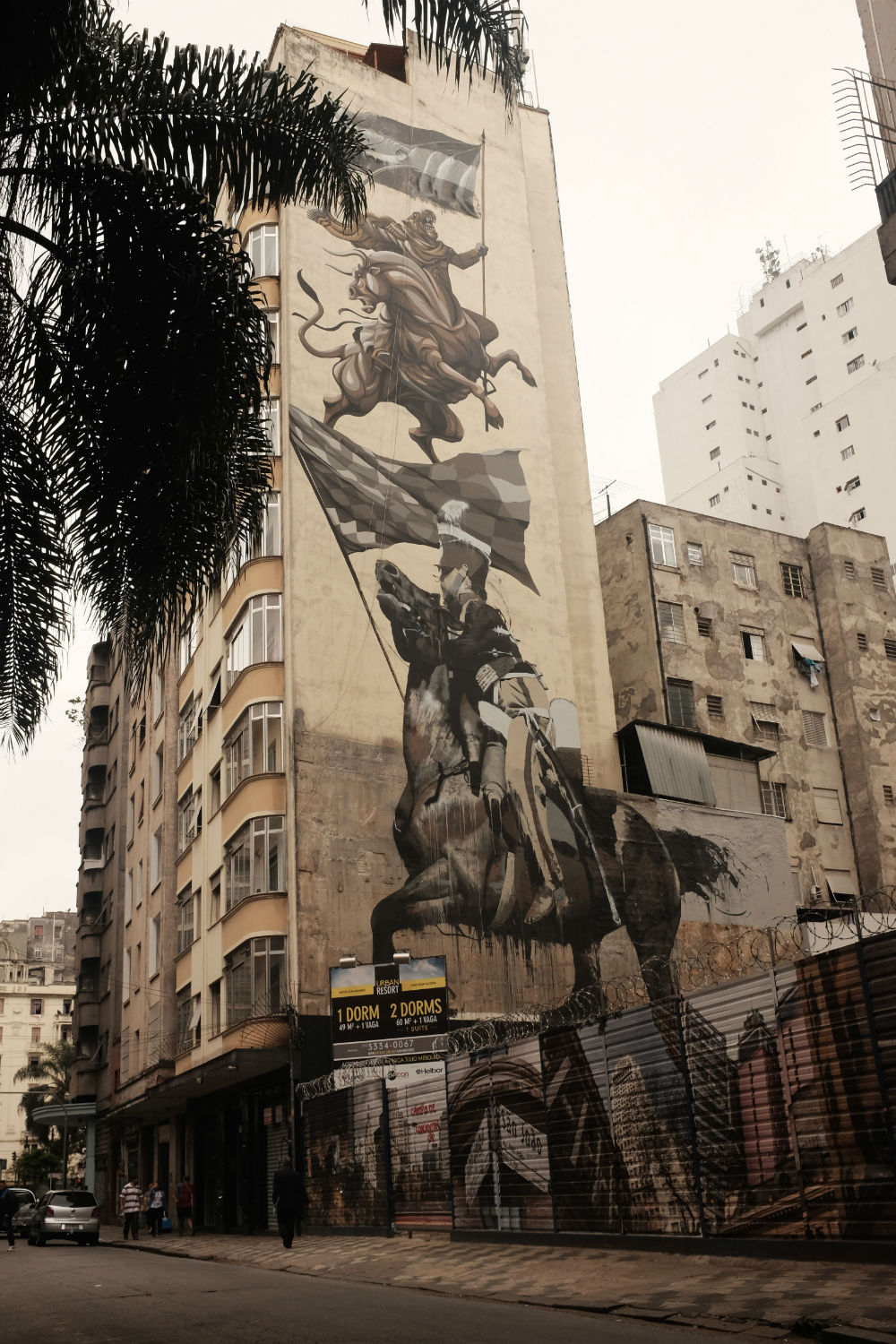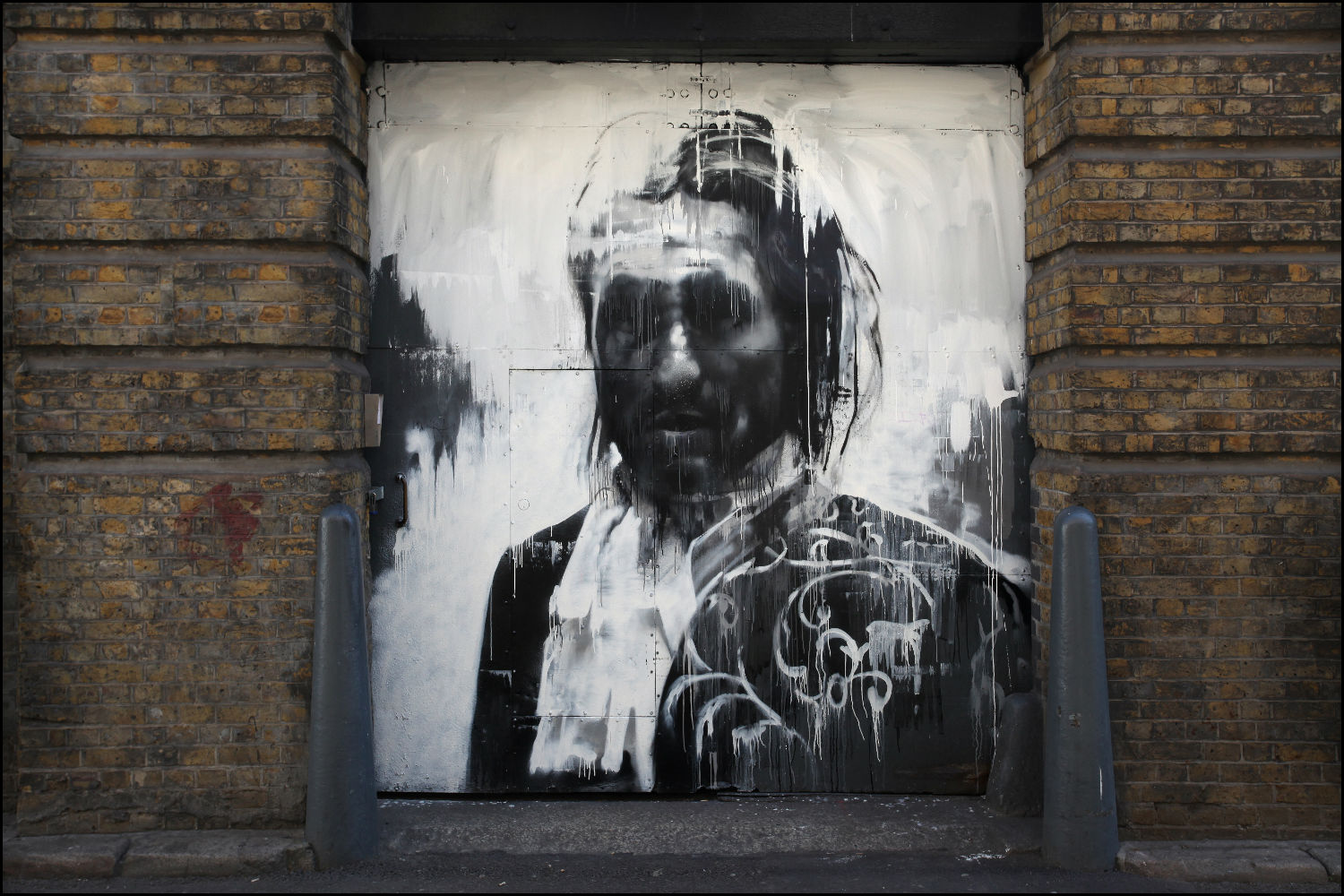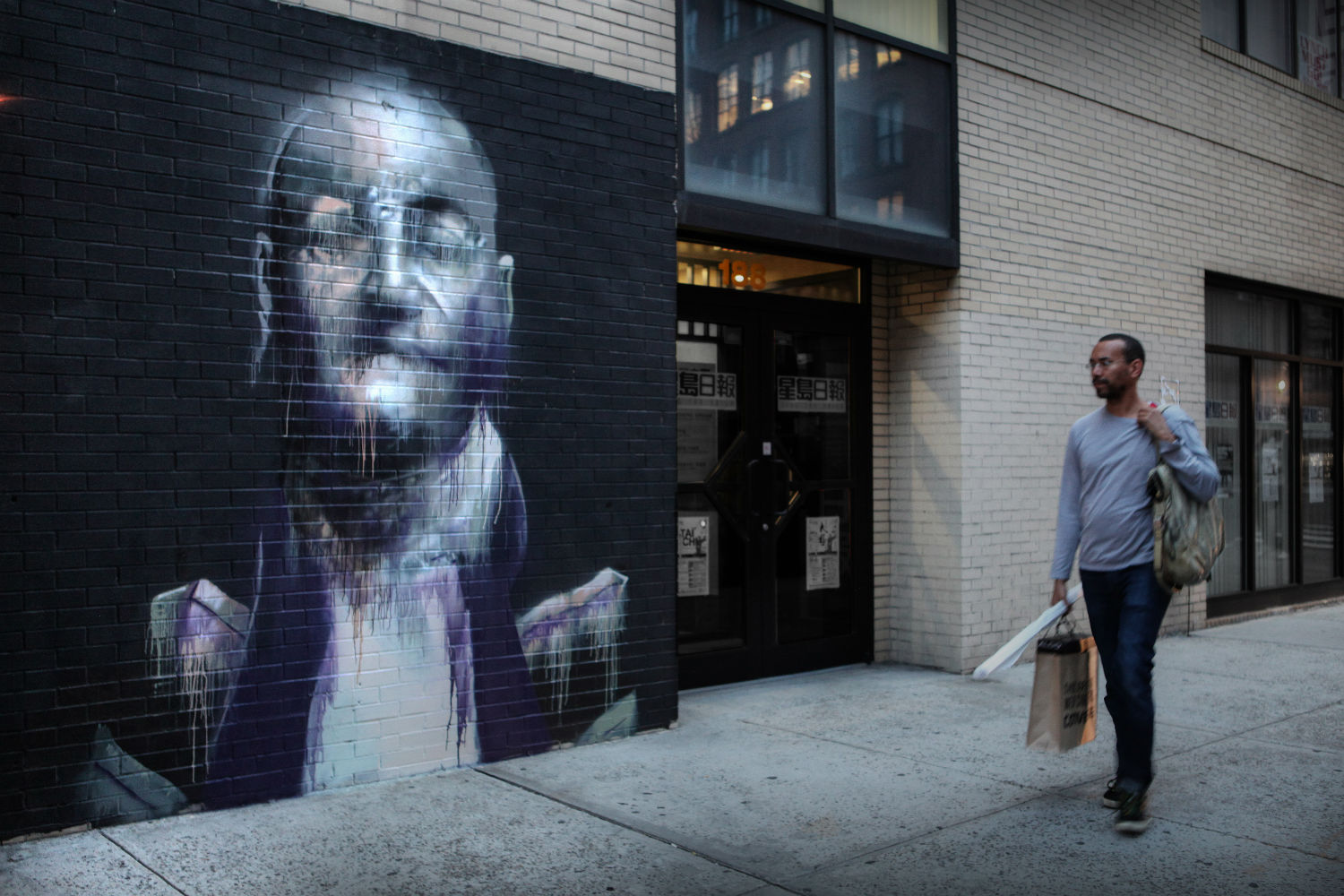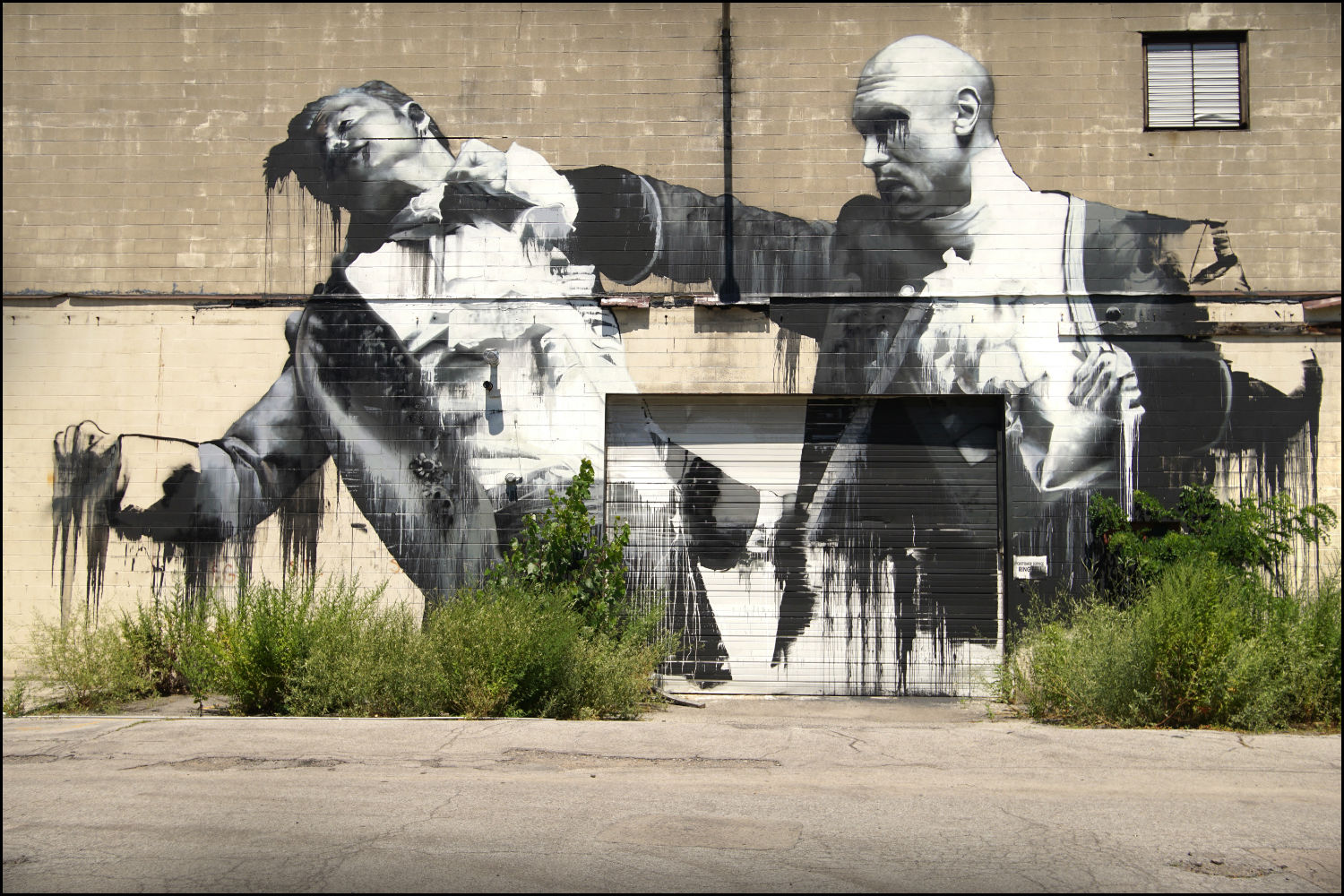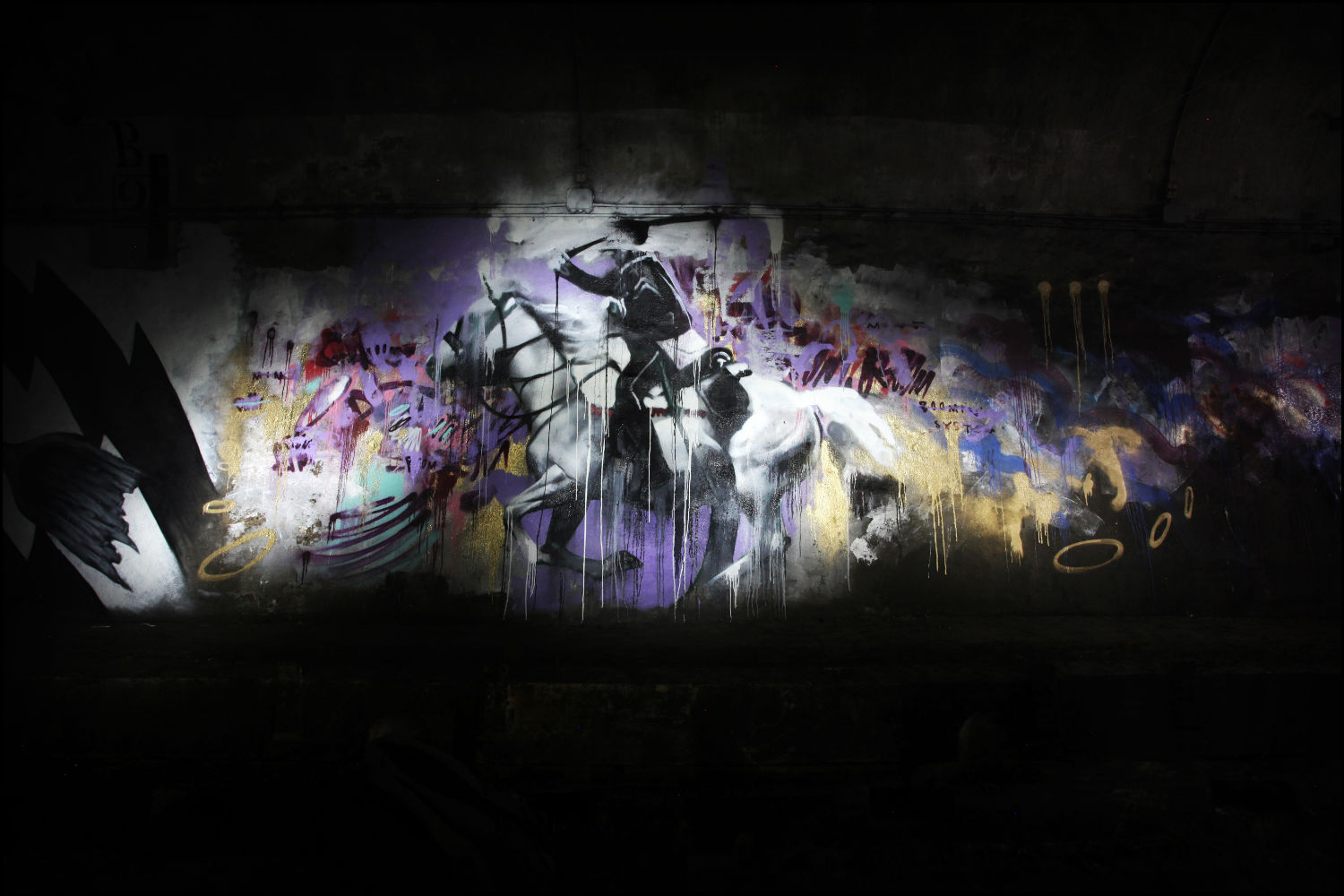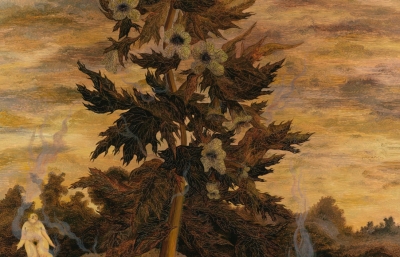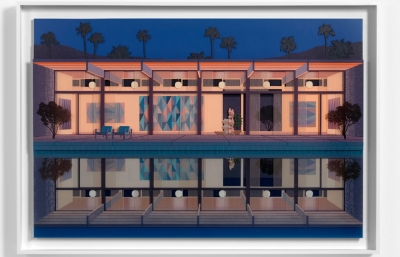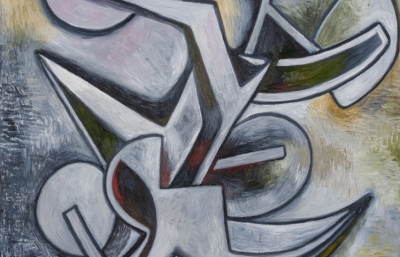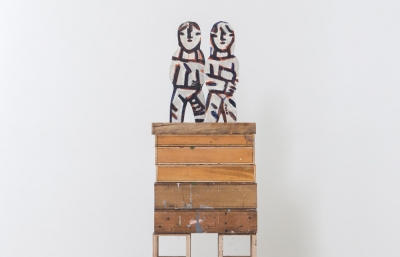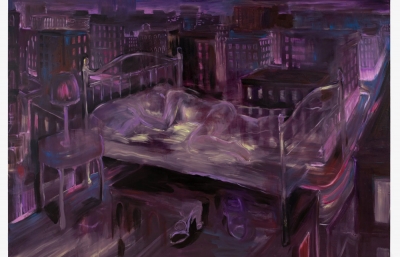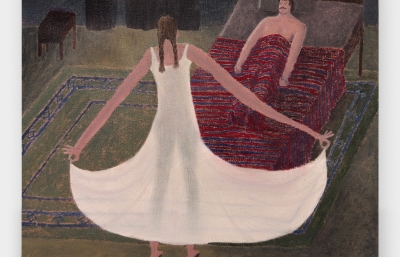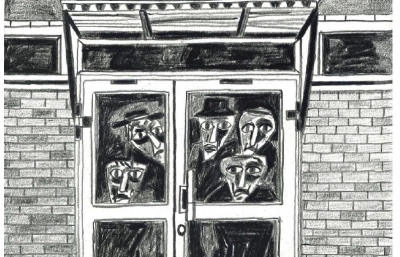"Any real change should make you feel, at first, afraid," author Nathan Hill writes at the conclusion of The Nix. "If you’re not afraid of it, then it’s not real change." About an hour after leaving a London pub with Conor Harrington on a cool October evening, I found myself in the hotel lobby, nightcap in hand, and this book, which I have been enjoying over the course of a few trans-Atlantic flights now. It hit me, the idea of real change and the fear that comes with it is exactly what Conor was telling me without really outright proclaiming, "Change is the necessary scary one needs in their life!" If a leap in your art career doesn’t make you feel just a bit nervous and fearful, it’s probably not a leap at all in the first place. This fall, Conor made the leap, hit it straight on, and it’s starting to look beautiful on the other side.
The line from Hill provided a bit of synergy to this idea that Conor Harrington, already an established contemporary painter and one of the world’s most successful street artists, was beginning a new phase in his career. From his newest monograph to an exhibition with Pace Gallery in London, it feels as though, unassuming and humble as he is, Conor is making a major statement about not only his talent, but the relevancy of painting and street art in 2016. Even the title of both the show and book, Watch Your Palace Fall, alludes to politics and contemporary culture, but perhaps, even to his personal challenge to reimagine and reassert himself on the gallery walls of one of Mayfair’s finest galleries.
Conor and I have sat down previously for two cover stories, ironically, in 2008 and 2012, as the American presidential elections were coming to a head. When we got together last month, we had Trump, Brexit, and the refugee crisis on our minds, but mainly, we had this new body of work to discuss. Masterful in execution and culturally relevant in so many ways, it left the indelible impression that my friend embraced the challenge of change and triumphed in the face of the unknown.
Read this feature and more in the January 2016 issue of Juxtapoz Magazine.
Evan Pricco: Looking through your new book, where an interview sits right in the middle of the whole thing, when asked, "What's the weakest part of your art?" you respond, "My difficulty in letting go." I want to start there because, after our two previous cover stories, I have the feeling that doing press is not your favorite task. Letting go in this instance can mean letting go of work in terms of being finished, but I also think it means a little bit of letting go of yourself when it comes to describing what you do and what you mean by your work.
Conor Harrington: A friend of mine recently sent a clip of the Cuban-American painter Carmen Herrera being interviewed on the run-up to her 100th birthday. She said, “You cannot talk about art, you have to art about art.” I think that quote pretty much sums up my attitude too; I like to paint and let that be it. I don't know if talking helps or hinders the reading of my work. Painting, as a medium, attracts people who are a bit less fond of the spotlight, and conversely, graffiti is a great way of getting attention without people knowing your identity. Nowadays, we're seeing the rise of the artist as a brand and personalities coming to the fore, but I think I'll try and hide for a while longer.

Detail of "Rubble Kings," 2016
I think, in a way, your paintings contain a narrative where people want confirmation that they are correct in their reading into what you do. Let me read into something: I sense that this has been quite a year for you. Decisions had to be made, hard decisions that didn’t have some sort of formulaic answer. You left your longtime gallery and sort of stepped into the unknown. As an artist making work, and sort of challenging yourself in a way that relates to your personal life, was this a good year?
It has been a good year, but a very strange year at the same time. It’s always the case when you’re embarking on something new and unknown that the doubts set in, and in a way, this has been a bit like taking a jump into the dark. But as the year comes to a close, I think it has all worked out nicely. It definitely feels like a new chapter.
Do you doubt yourself when you begin a new body of work? Because when I see the new works you are doing, there seems to be a lot of confidence and command. Are you a self-doubter?
I think most artists are full of doubt, generally. I’m quite confident at the start, and then full of dread as the painting comes to a finish, because I realize it’s not the piece I had hoped it would be. At the start of every painting, I have this feeling of unbridled excitement that this piece will be the one, the one that I'll look back on in years to come as a breakthrough piece, but in the end, I usually just shrug my shoulders and say I suppose it'll do.
Did you have a specific work for this last show that you really feel like kickstarted your whole approach?
There wasn't a particular piece in the show, but there are two mugshots that I did a couple of years ago that were the beginning of this body of work. I had exhibited a large group of quite-detailed, time-consuming works in New York in 2014, and as soon as I got back to my studio, I launched into two blown-up portraits. They were never exhibited, but I think they may be my two favorite paintings, and they really kickstarted what I'm doing now.

Copenhagen, 2015. Photo by Ian Cox.
Did making your monograph, Watch Your Palace Fall, give you a sense of confidence? Making new work, then seeing work that you had done in the past, did you recognize how you had evolved? It must have helped to realize that if you ran into artistic stalemates, you had at least worked yourself out of jams before?
I felt quite nostalgic, really. I hadn’t realized how much time had passed or how much work I had done. There’s some dodgy work in my back catalogue, but generally it's not as bad as I seem to think. Although my main focus of interest hasn’t really switched theme-wise, I think I jumped around quite a lot over the last ten years or so. The main relief is realizing I’m quite happy with the way I’ve developed and that I’m not looking back on any period wishing I could achieve that again. I’m quite happy moving forward and I think my best work is still ahead of me. Also, I think it’s important to stop and take stock and get a good overview. It has been 14 years since I finished art school, and the book feels like it has come at an appropriate time.
As you made a bit of a transition gallery-wise this year, were there any new observations about your paintings that you really liked hearing?
It’s hard to know. I'm not sure if people are always honest when they give you feedback but it's been quite positive. It sounds like such a simple observation but I think people quite like my use of color in this show. I used it in a more simplistic, symbolic way. I've always liked working in monochrome. It allows me to focus on the marks instead of always trying to get the colors right, so in the preparatory shoot, I color-matched the floor and backgrounds with the clothing for some of the paintings. I wanted the figures to emerge out of a pool of color, so the color becomes the subject of the piece, as well as the figure itself.
Everything in the new work flows a little less tightly but is still very painterly and well-executed. You talked about how, when making this body of work, you gravitated toward a more loose style. How would you define this looseness?
I’m no longer layering up to achieve a certain level of polish. I’m trying to hit everything once and move on. I remember being shocked that Luc Tuymans never spent more than one day on a painting, but I’m beginning to see his logic. I call my new approach “one hit wonder.” If I can achieve the desired finish in one hit, then it works, and if I have to go back into it, I might kill it. So this means if a painting goes well, I get it finished much quicker than before, but now, a day’s painting is much more taxing than before because I know if I don't get a section right first time ’round, I probably won't be able to go back in and save it later.

Collaboration with Maser, Fort Smith, Arkansas, 2015. Photo by Maser
Let’s put the serious aside and do the music question before I become Charlie Rose. You and I have similar musical taste, and that’s definitely come up in our conversations. Knowing it influences what you do in a painting, where's your head at in terms of music and how it relates to your art?
I’m still big on rap, although as I get older, I’m being less of a purist in my tastes and enjoying some of the more disposable acts. I’m listening to a lot of online mixes too, a lot of Latin tropicalia and African funk. Soundtracks are really nice to paint to, so I like a lot of slower, meandering music like Nils Frahm or Nicolas Jaar. But in the mornings, I have to be boring and listen to the news or podcasts to wake myself up in the studio. There's something about listening to other people talking that gets me going.
Do you still use actors and models and fully staged photography for reference in your paintings? Has this evolved over the years, and how does that "set the stage" for what comes next when you paint alone in the studio?
Yes, but the shoots have become much less elaborate. I’ve probably done eight to 1ten shoots over the last few years, and funnily enough, I started with the most extensive shoot and they’ve slowly but surely become a lot simpler. I don’t think it’s because I’m more confident with them, but probably because what I want from them has changed. I wanted to create a new world before, but now I just want to create a moment that I can attack. A lot of the narrative now is coming from the painting process as opposed to the set.
I was having a conversation with a mutual friend about you showing at Pace Gallery, and he mentioned what a big step it was for a street artist to show in such a blue chip space. That threw me off. Not the blue chip thing, but I guess I have never considered you a street artist, despite having done some really brilliant street works in the past, and dedicating the second half of your book to all the great walls that you’ve done. Am I off? In terms of your career, what does street art mean to you?
Graffiti has by far had the biggest effect on my work. When I was a teenager, it was all I wanted to do. I think I always felt like it could go further than just being a fringe genre, and that’s basically what I (and many others) have been trying to do. For a long time, I retained an “urban” aesthetic in my work, mainly by running tags through the figure, but after a while, I felt like a fraud tagging on canvas, especially as I hadn't done the real thing in over ten years. I think that now, if someone who didn't know anything about my background was to see my most recent show, they wouldn’t be able to see a trace of graffiti; in fact, it is still the backbone to what I do, both in terms of process and narrative. My process is all about painting on, while simultaneously taking off, much like a conversation between a tag and the buff. My narrative stems from the male ego, and though it might look more historical or political, it is rooted in graffiti and hip hop. As far as painting outdoors goes, I still paint walls. I'm not super competitive about it, trying to out-paint everyone. I spend far more time in the studio, but I try not to differentiate between inside and outside. As long as I'm painting, I'm happy.

London, 2015. Photo by Ian Cox
I can’t wait to ask you this. Who is your artistic hero?
Ok, to totally contradict something I said in a previous Juxtapoz interview—Kanye. I’ve always been a big fan of his music but not necessarily of his attitude. But in order to succeed as an artist, you need two things: ability and confidence. There are so many people with bags of talent but for some reason they see a barrier between them and what they want to achieve. We all have mental roadblocks lying ahead, and I think fear can be one of the biggest problems for an artist. Someone like Kanye, it goes without saying, doesn't let anyone or anything stop him from achieving his creative goals. I’d like to be a bit more like that... but I’d probably keep my mouth shut along the way.
And strictly from a painting point of view, I'd pick Jenny Saville. I don't think there's anyone on the planet that can paint like her.
You and I talked about how you have wanted to move to NYC and be a working artist there. The history of NYC as an art place is significant, but I think of London being the same type of place. Being that you are from Ireland but have lived in London for over a decade now, does London still have a romanticism for an artist?
It probably does for a lot of people, but I think I’ve been here too long. Similar to New York, I imagine, London is becoming a very difficult place for artists. The cost of living, even while we await the impact of Brexit, is too much for a lot of people, and every week I hear about artists having to leave. The flip side about all this is that the regions will benefit, but I think a creative scene always needs a hub or a concentration of artists in order for the arts to flourish. But for me, NYC is still the one. Of all my cultural interests, jazz to hip hop, mid-century painting to graffiti, New York is the mecca.
I recently realized that during each of the three times I’ve interviewed you, an American president was being elected. What’s funny is that I think I went from optimistic, to sort of optimistic, to horrified about the process of campaigning. Your work has spoken to the moods of America's political arena even though you are painting from a different place. Maybe there isn't a question here, but I was definitely intrigued thinking about that today.
Yeah, my work is definitely becoming more political, but I think the rise in extreme political discourse isn’t just unique to America at the moment. We’ve got a similar narrative here in the UK and it looks a bit bleak across Europe too. The only hope I can offer is that I’ve been on the shelf in Juxtapoz in US stores when a Democrat has been voted in on the last two occasions, so it should all work out this time ’round. Anybody with an interest in conspiracy theories and The Illuminati need look no further than right here.
----
Originally published in the January 2016 issue of Juxtapoz Magazine, on newsstands woldwide and in our web store.

